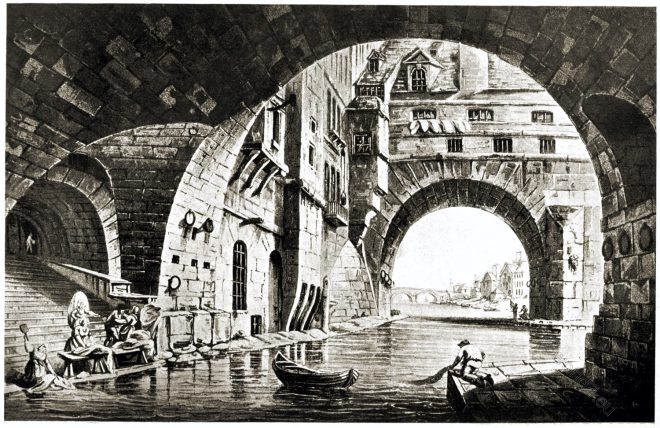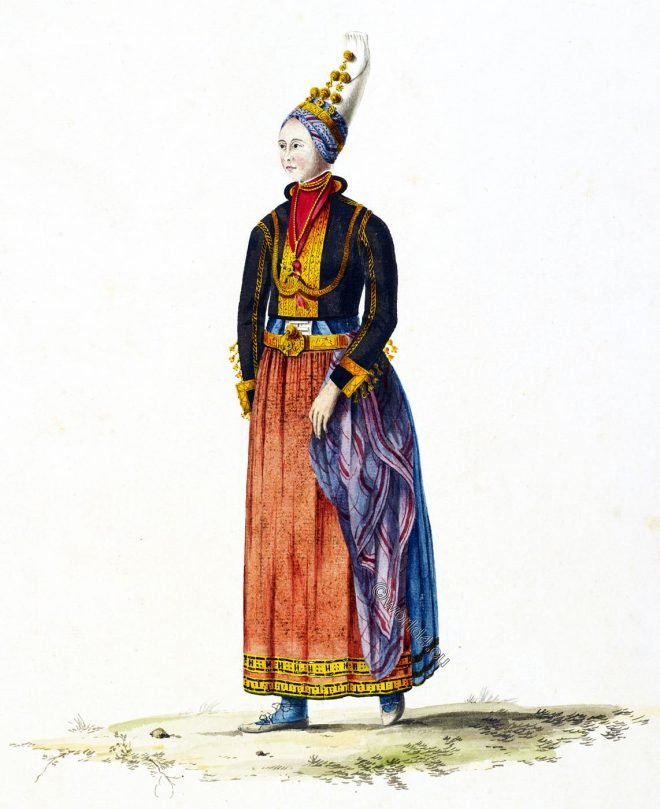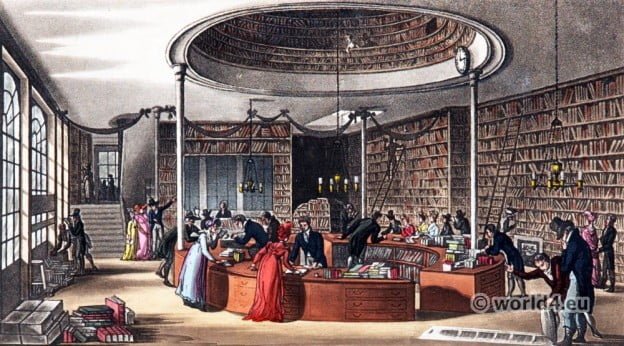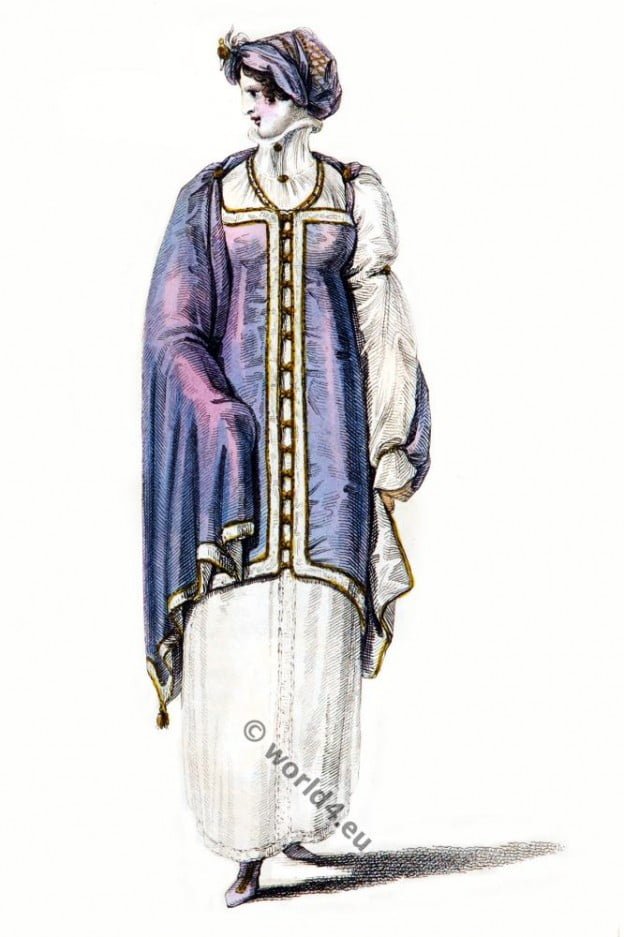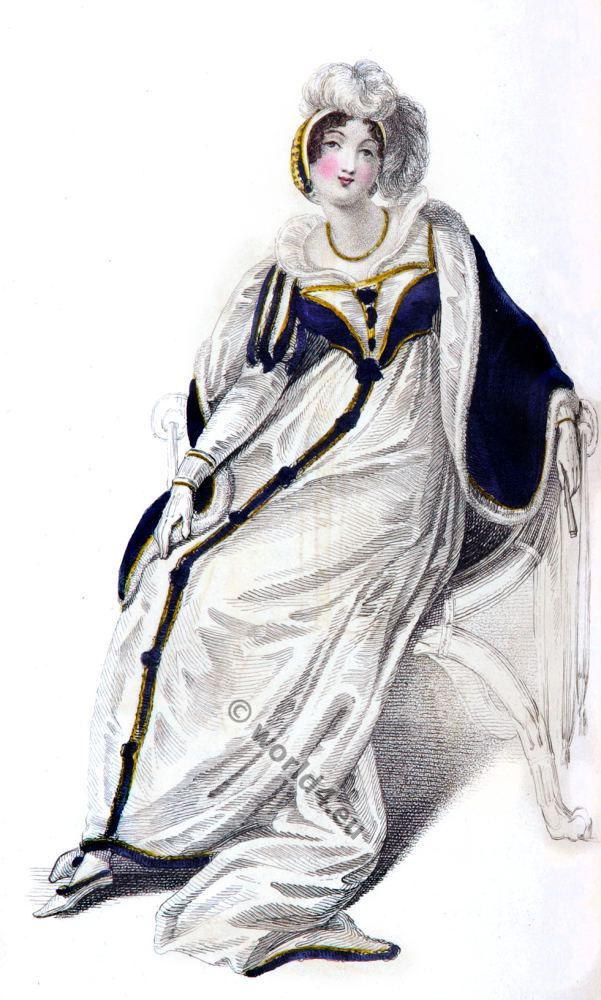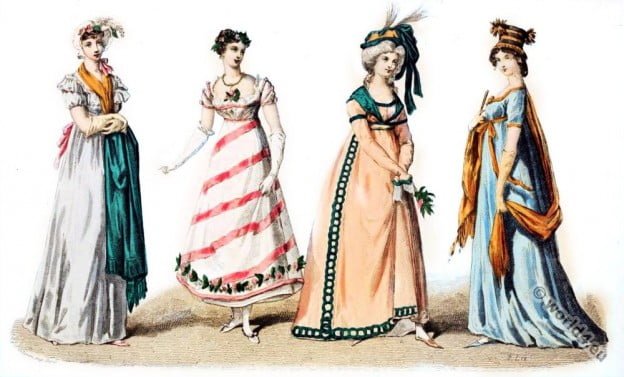The Pont au Double seen from the Pont Saint-Charles. The Washing Place of the Hotel-Dieu.
Category: 1809
Costumes and shawls. French directorate, consulate and first Empire.
Costumes and scarves in the 18th and 19th century. The fashion of classicism during the French directorate, consulate and first empire.
Neapolitans eating macaroni. Italian scenery, manners and customs 1809.
The plate represents a country maccaronara; for so are called those public houses where nothing but macaroni is sold; and no village is without them. The Neapolitan macaroni is easily known by not being twisted like that of Genoa, but straight, or bent only at one end.
Iceland wedding dress. Iceland bride 1809.
Iceland wedding dress 1809 Source: Journal of a tour in Iceland in the summer of 1809 by Sir William Jackson Hooker. Published by Longman London, Yarmouth 1813. Above picture: Different… Read More
Dalarna costumes, Sweden 1809.
Dalarna costumes, Sweden. Dalarna is a historical province (landskap Swedish) in the heart of Sweden.
Light infantry of the Imperial Guard (Napoleon 1st, 1809).
Infanterie légère de la Garde Impériale (Napoléon 1er,1809). Voltigeur. Carabinier.
The Temple of Muses, Finsbury Square London.
The Temple of Muses, Finsbury Square London. Metropolitan Improvements; or London in the 19th century.
Regency walking dress with Gold necklace, and York tan gloves.
Raised spotted muslin underdress, with loose sleeves. Gold necklace, and York tan gloves. The repository of arts by Rudolph Ackermann.
Fashion London April 1809. Regency costume, full dress.
English women’s fashion in April 1809. Street clothes in colour and style in Regency London by Rudolph Ackermann.
Fashion history. Reign of Napoleon I. 1804 to 1814.
Fashions under the First Empire. Reign of Napoleon I. 1804 to 1814.

